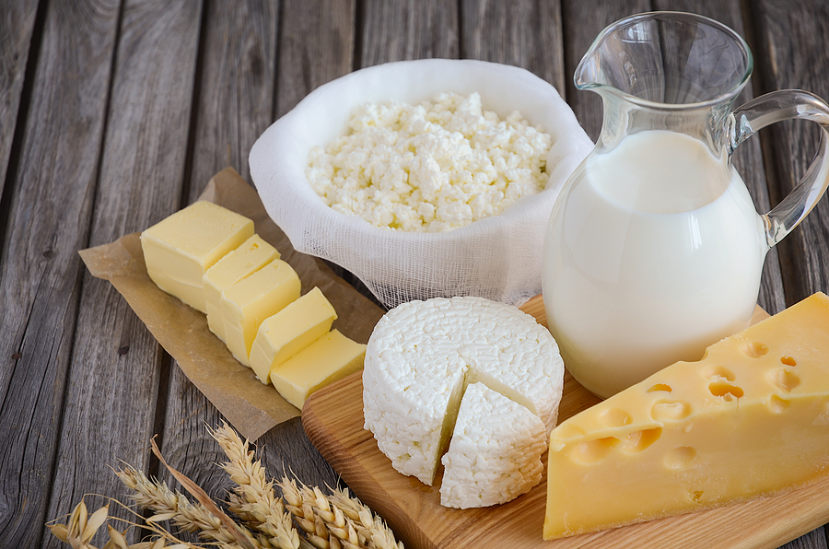Things I Can East to Help Digest Cheese

Do you get gas, bloating, cramps or diarrhea when you eat dairy products? You may have lactose intolerance. Read on to learn how to manage your symptoms and find foods you can eat.
What is lactose intolerance?
Lactose intolerance is when your body has trouble digesting lactose, a sugar naturally found in milk and dairy products. This is because you do not have enough of an enzyme called lactase to break down lactose. As a result, undigested lactose sits in your large intestine (colon) and gets fermented by bacteria. This may cause gas, bloating, cramps, diarrhea and nausea. Lactose intolerance is different from a milk allergy. A milk allergy is when your body is allergic to a protein in milk.
What foods have lactose?
Lactose is found mainly in milk and dairy products such as cow's milk, goat's milk, yogurt, cheese and ice cream. It can also be an ingredient in foods and beverages like bread, cereal, lunchmeats, salad dressings and mixes for baked goods. Read labels and look for ingredients such as:
- Milk, cheese or yogurt
- Milk solids or milk powder
- Malted milk
- Cream
- Buttermilk
- Curds
- Lactose
- Whey
Foods that contain lactic acid, lactalbumin, lactate and casein do not contain lactose.
Can I still eat foods with lactose?
Most people with lactose intolerance can tolerate some lactose in their diet. This is because they still produce some lactose but not enough to digest large amounts. Foods like hard cheeses (cheddar, mozzarella, Swiss) and yogurt have lower amounts of lactose compared to milk and may be better tolerated. Having other foods when eating foods with lactose may also help. Start by eating a small amount and see how you feel. Keeping a food diary after eating foods with lactose to record your symptoms after can be helpful.
What foods are lactose free?
Most fruits, vegetables, grains and meats are lactose free. These foods may contain lactose if prepared with milk-based ingredients (e.g. cream sauces, cheese sauces, breads made with milk, breaded and battered meats, etc). Most grocery stores now carry lactose-free milk, yogurt and cheese.
Can I still get enough calcium if I'm lactose intolerant?
Yes. There is lactose-free milk, yogurt and cheese available that have the same amount of calcium as the regular products. Choose these to get enough calcium. The following non-dairy foods and beverages are also sources of calcium:
- Calcium-fortified soy, almond and rice beverages
- Calcium-fortified orange juice
- Vegetables such as bok choy, broccoli, rapini, collards and kale
- Canned fish with bones such as salmon, sardines and anchovies
- Soybean-based foods such as edamame, soy nuts and tofu
- Beans like chickpeas, kidney beans, white, navy and pinto beans
- Nuts and seeds like almonds and sesame seeds
- Blackstrap molasses
Find more food sources of calcium here.
What about calcium supplements?
Speak to your health care provider or dietitian about calcium supplements if you think you are not getting enough calcium from food.
Are there medications that can help lactose intolerance?
Lactase pills can be taken before eating meals containing lactose so you are less likely to get symptoms. There are also lactase drops that can be added to liquids like milk and cream. Speak to your pharmacist about the forms of lactase that are available.
You may also be interested in:
What You Need to Know About Calcium
Food Allergies & Intolerances
Understanding Non-Dairy Beverages
Lower Your Risk of Osteoporosis
7 Tips to Help Keep Your Bones Strong
Last Update – September 7, 2019
Things I Can East to Help Digest Cheese
Source: https://www.unlockfood.ca/en/Articles/Allergies-and-Intolerances/Managing-lactose-intolerance.aspx
0 Response to "Things I Can East to Help Digest Cheese"
Post a Comment